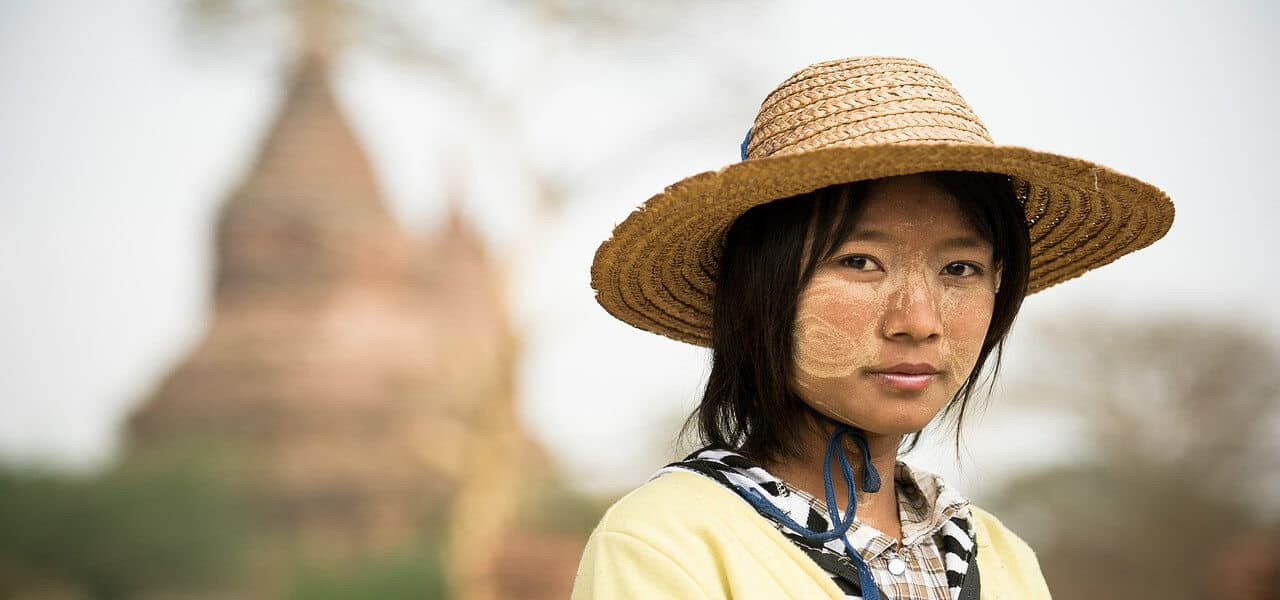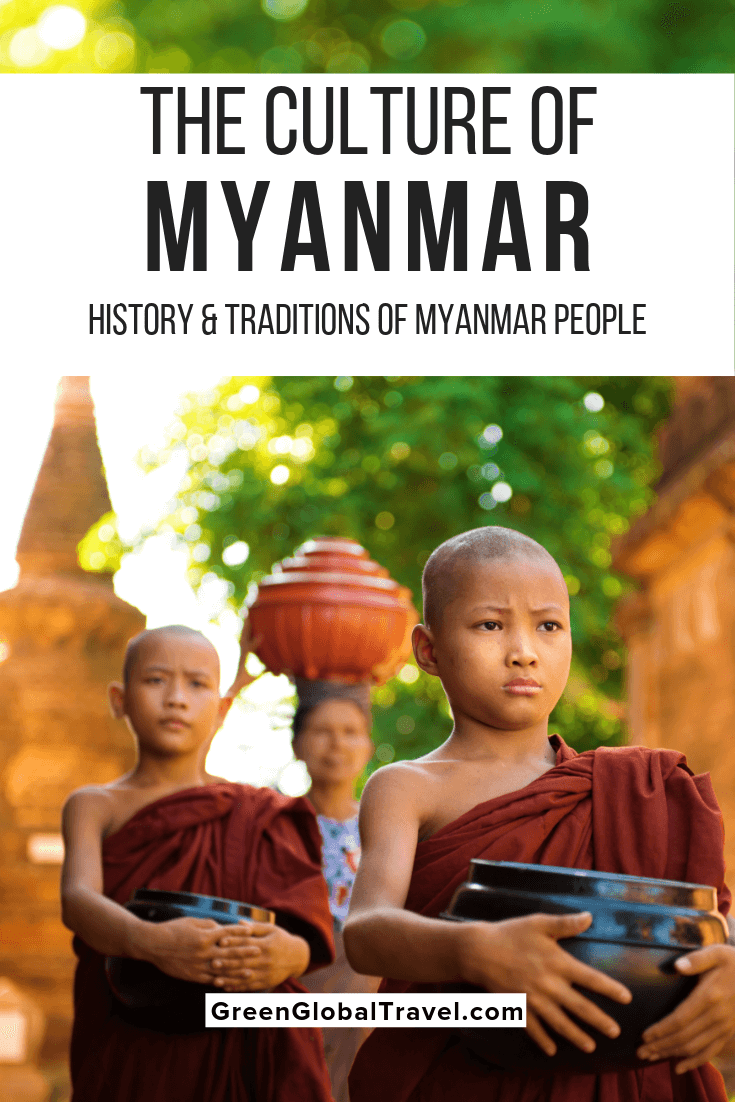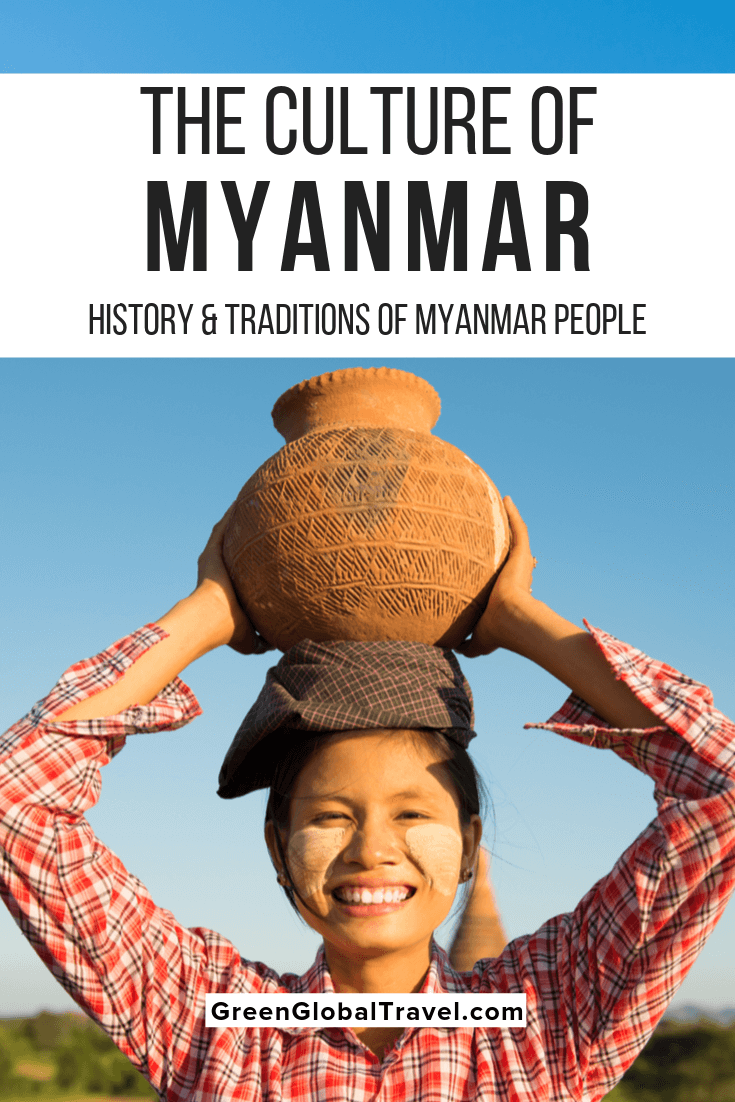Travelers who visit Myanmar are sure to be immediately struck by the richness of the country’s culture.
The culture of Myanmar can be both seen– thanks to the plethora of beautiful pagodas and stupas, spirits and Buddha images, woven designs and clothing, architecture, and gardens– as well as felt through every interaction with these friendly, kind, and dignified people.
This richness is in no small part thanks to the country’s impressive diversity. Myanmar is an ethnic patchwork made up of at least 135 different ethnic groups, each with their own traditions, customs, cultures, and histories.
While the country is today nominally united, these groups each retain their own proud identities and resort to civil war when their way of life is threatened by the majority Buddhist Bama culture.
The face of urban Myanmar may seem to be a Burmese Buddhist one. But a visit to Myanmar is, in reality, a journey through myriad smaller regions and among scores of ethnic minority groups.
So here’s an overview of Myanmar culture, including the history, religion, language, and traditions of some of the country’s most intriguing ethnic groups.
READ MORE: 15 Harmful Traditions & Cultural Practices Tourists Shouldn’t Support
THE CULTURE OF MYANMAR: CONTENTS
A Brief Overview of Myanmar’s History

Ancient Myanmar History
Around the 1st Century BCE, much of the northern part of what is now Myanmar was controlled by the Pyu civilization. They created city-states in central Burma, while the Mons controlled the territory to the south of them from about the sixth century AD.
In the mid-9th Century, Burmans from the eastern Himalayan region established a small settlement, Pagan, on the banks of the Irrawaddy River. They ultimately supplanted the remaining Pyu.
From these humble beginnings, the Pagan Kingdom would grow to be extremely powerful. With the overthrow of the Mon capital of Thaton by the early to mid-11th Century, Myanmar was united for the first time, with Pagan as its capital city.
So began the furious building of thousands of Buddhist temples, over 2,000 of which can still be seen today on the Bagan Plain (which is currently being threatened by mass tourism).
This Empire-building period of the Burma majority came to a screeching halt when the Mongols, led by Kublai-Khan, invaded Pagan in 1287.
Various attempts were made to reunite the country, but none succeeded until the Toungoo in the 16th century. It, too, fell around 1750 and was taken over by the Kongbaung Dynasty.
READ MORE: The World’s Longest Rivers
Colonial History
The monarchy was not destined to remain in control of a united Burma, however, and in 1824 the British invaded and colonized the country.
Over the next few decades, the British took more territory and the Kingdom of Burma’s royal palace in Mandalay became a British fort. The last Burmese King ended his days in exile in India.
The final indignity visited upon the proud Burmese people was a form of internal colonization.
The vacuum created by the end of colonialism (Independence and democracy briefly reigned 1964-1966) spawned decades of ruthless military regimes, which ruled through fear and political violence.
Outside of Rangoon (which is now known as Yangon) and Mandalay, pretty much everyone was rejecting the Mongols, the British, and the Burmese military.
READ MORE: Author Salman Rushdie on Colonialism & India’s Independence
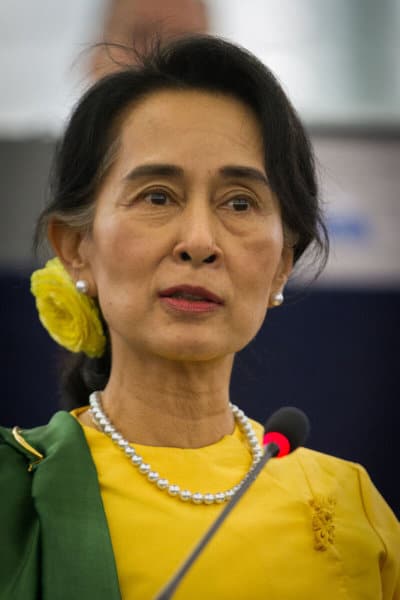
Modern History
It’s fair to say that by the 1960s, Burma had gone to hell in a handbasket. All distances in Myanmar are measured from the Sule Pagoda in Yangon. In the early 1960s, the Burmese government controlled a circle of land that was an 8-mile radius from the Sule Pagoda.
The rest of the country was in the hands of ethnic minority rebel armies and warlords. Following this, various small centers of power were located all around Myanmar.
Until earlier this century, there were two borders of the country– the “border” that exists on maps, and the “real border,” which was the distance from the center that the military regimes controlled.
The country’s various minority groups set up governments, armies, and education and health systems, and they kept their languages alive for future generations.
It would appear that Myanmar has been governed by a nominally civilian government since April 2012, and led in all but name by Aung San Suu Kyi. But in reality, the country is still controlled by its military, which holds a majority of seats in Parliament.
It is now possible for international visitors to travel around Myanmar. But there are still regions of the country where dangerous fighting continues, and where the Burmese army wages a war of attrition upon peoples such as the Rohingya.
Many of the places you may explore on your trip to Myanmar were, until very recently, off-limits to all but the Burmese military.
READ MORE: 10 Ancient Archaeological Sites (World Travel Bucket List)
Religion in Myanmar
Religion is one of the most important factors in Myanmar’s history and modern-day cultural practices. Here’s a look at some of the country’s primary religions:
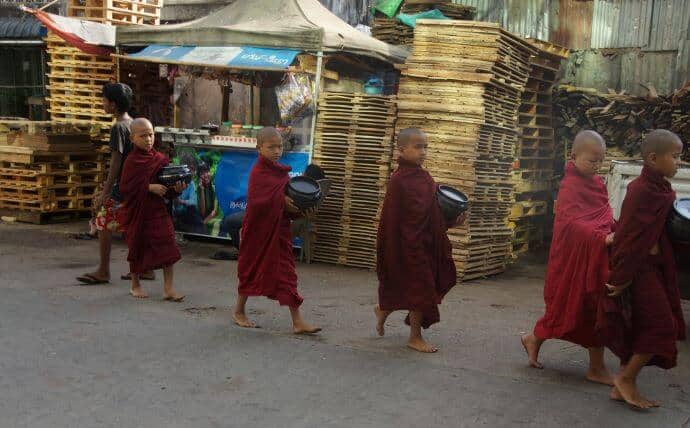
Buddhism
Myanmar is considered to be one of the most devout Buddhist cultures in the world, and the very face of the country has been shaped by this devotion.
To this day, an estimated 90% of Myanmar’s population follows Theravada Buddhism.
Monks, nuns, meditation centers, and pagodas are all dominant aspects of the landscape, of cultural practice, and of everyday life in Myanmar.
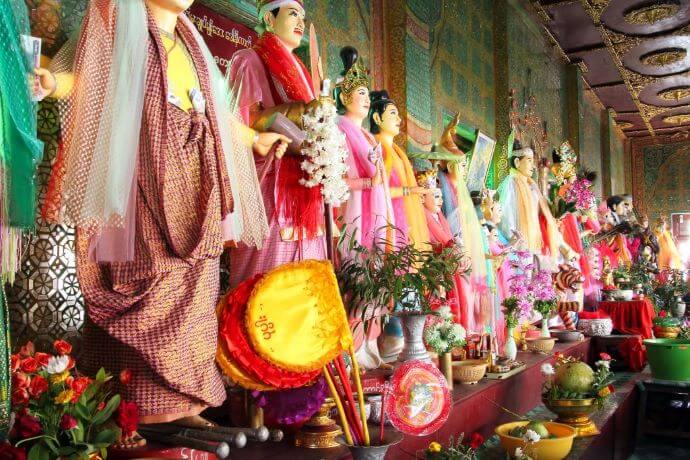
Nats
Another unique feature of religion in Myanmar is the worship of animist spirits, known as the cult of the 37 Nats, which co-exists with Buddhist beliefs.
Nat spirit festivals occur throughout the country, and typically involve spirit possession.
Nat spirit shrines are located in all villages, townships, pagoda precincts, and next to important village places such as banyan trees and dams.
Other Religions in Myanmar
Although Buddhism is by far the most common religion in Myanmar, other faiths are also widely practiced. These include Protestant Christianity, Islam, and Judaism.
READ MORE: Saving Asian Animals (Best Wildlife Conservation Programs)
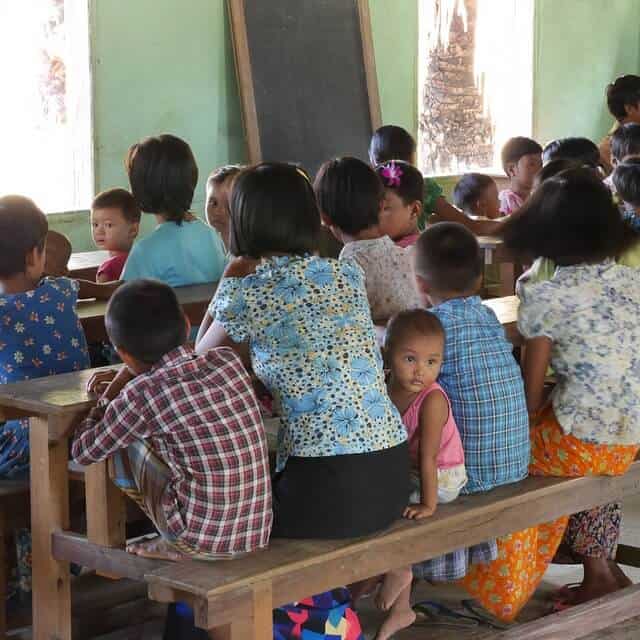
Language in Myanmar
The official language of Myanmar is Burmese, and it is widely spoken throughout the country.
However, there are many other indigenous languages spoken in Myanmar, mostly stemming from three separate language groups.
Under British rule, English was mandatory in schools. As such, many of the country’s older people learned to speak it fluently.
It is no longer required, but many urban people (especially in the Myanmar tourism industry) have always learned and practiced English.
The military regime closed universities for over a decade in the 1990s, so a whole generation of people have little to no English language skills.
But the nation’s younger people have taken full advantage of the un-censoring of information and telecommunications. So English is widely spoken, written, and practiced online and via social media.
READ MORE: How to Start a Travel Blog (& Build a Successful Online Business)
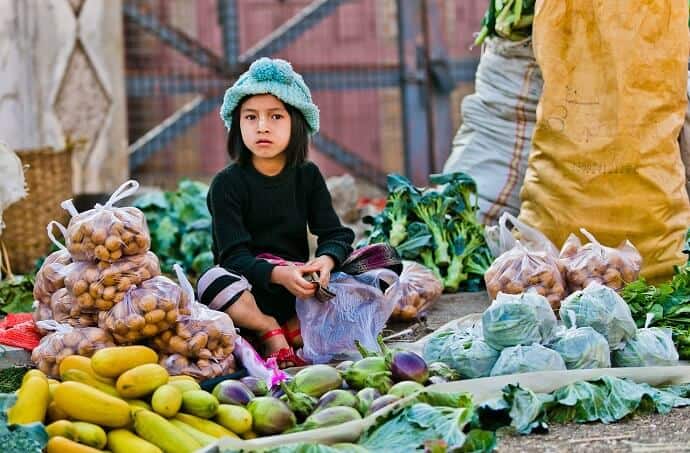
Myanmar Cultures & People
One of the reasons that Myanmar is such a unique and culturally rich place is that it is home to so many distinct ethnic groups.
While there are common threads that unite them, each of the groups has also developed distinct traditions and cultures, including their own unique festivals, style of dress, and music.
Many upland groups spill across national borders into China, Thailand, and India. Here’s an overview of 10 fascinating Myanmar cultures.
READ MORE: 50 Fascinating Facts About Indian Culture
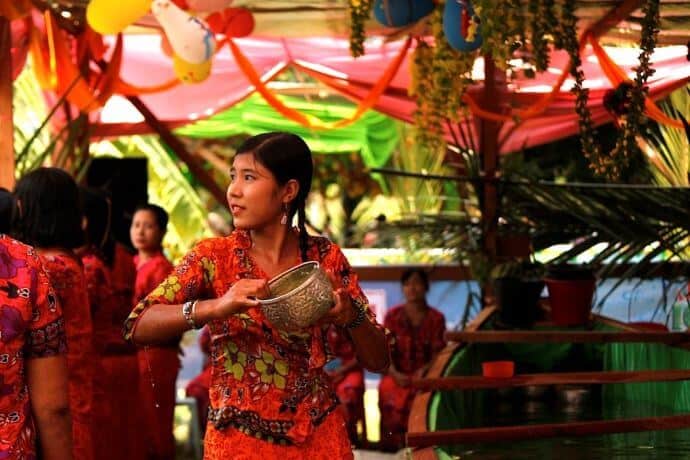
Arakanese
The Arakanese (also known as the Rakhine) are the majority in Rakhine State, in western Myanmar. It is estimated that the Arakanese make up around 5% of the country’s total population.
The great Muslim Sultanate of Mrauk-U existed in Rakhine State, and its ruins are almost as wonderful a sight as the Shwedagon Pagoda and the Pagodas of the Bagan Plain.
Nearly all of the Arakanese practice Theravada Buddhism. They consider themselves one of the earliest adopters of the teachings of Gautama Buddha, following the introduction of Buddhism to Myanmar via South Asia.
Culturally, the Arakanese have many distinct practices. But there’s a strong South Asian influence that is especially prevalent in their art, architecture, and cuisine.
It was the Burmese military regime that changed the name of Arakan to Rakhine State, and the Arakanese to the Rakhine. They excluded the Rohingya Muslims, many of whom are also occupants of Rakhine State, from being citizens of Myanmar.
The majority of the Rohingya have fled recent government violence (which is essentially genocide), and are now living in refugee camps across the border in Bangladesh.
READ MORE: Exploring Rwanda’s History at the Kigali Genocide Memorial
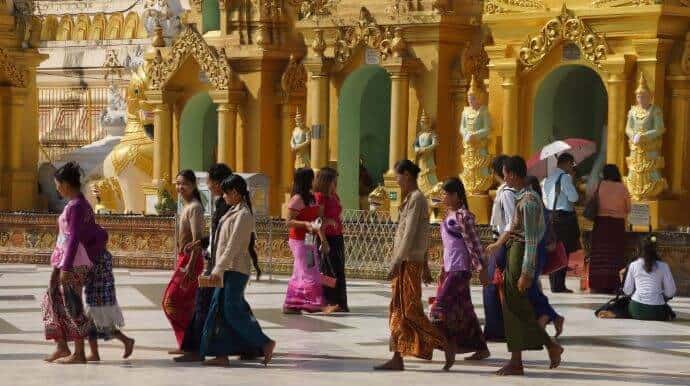
Burmans
The largest ethnic group in the country is the Burmans, who are believed to make up well over half of Myanmar’s population (around 54 million). The Burmese language is their mother tongue, and also the country’s official language.
The Burmans are of Sino-Tibetan heritage. They arrived in Myanmar and established the early origins of Pagan, defeated the Mons, and took over what remained of Pyu civilization.
Since then, the Burmese Buddhist Kings have strongly influenced all of Myanmar culture, in particular with their strong devotion to Theravada Buddhism.
Successive military regimes rewrote Burmese history books to emphasize the nation-building endeavors of the Burman Buddhist Kings.
While they certainly did a lot of conquering, nation-building, and governing, they also co-existed with many other city-states and groups that were indigenous to this part of Southeast Asia.
READ MORE: Tibetan Culture in Ladakh
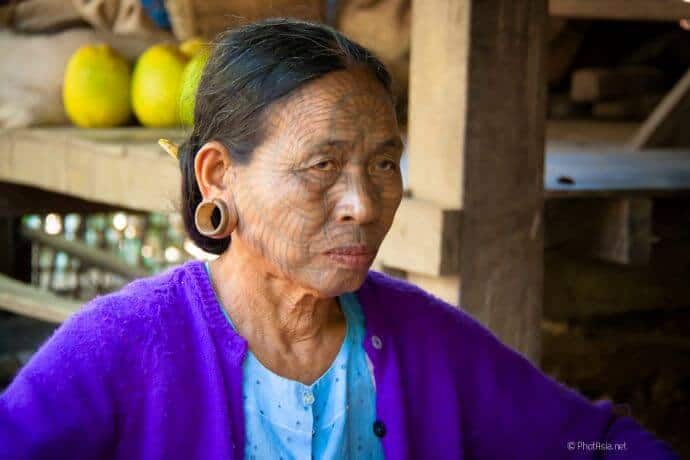
Chin
Hailing mainly from the Chin State, but found all around the country, the Chin is one of the largest ethnic groups in Myanmar.
Historically the Chin were animists, believing that all creatures, objects, and places possess a distinct spiritual essence. But since the 1800s, Christianity has grown to be the largest religion amongst the Chin people.
The Chin people are perhaps best known for their colorful and beautiful traditional dress, as well as the festive Chin National Day.
Within Myanmar, Chin women are considered to be especially beautiful, and many older women can still be seen with full-face tatooing.
On Chin National Day, you can see traditional dances, sports, and music played to celebrate the Chin cultural identity.
READ MORE: Andean Art & Music at the Otavalo Market in Otavalo, Ecuador
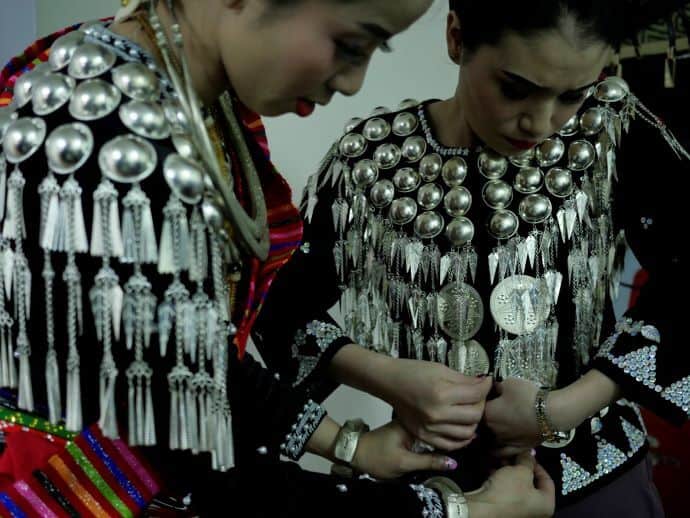
Kachin
Located in the northernmost state of Myanmar, the Kachin people are a proud and unique ethnic group. As well as those in Myanmar, other Kachin people can be found in both China and India.
The Kachin are actually a collection of various subgroups who all share common characteristics, and there are believed to be six main groups in Myanmar.
The Kachin were historically well-known for their prowess in battle. In fact, many of them were recruited into the British military during the colonial era of occupation.
Although they were traditionally animist, today at least two-thirds of the Kachin people adhere to Christianity. But celebrating pre-Christian holidays is also fairly commonplace.
READ MORE: Top 10 Things to Do in Agra, India (For Nature Lovers)
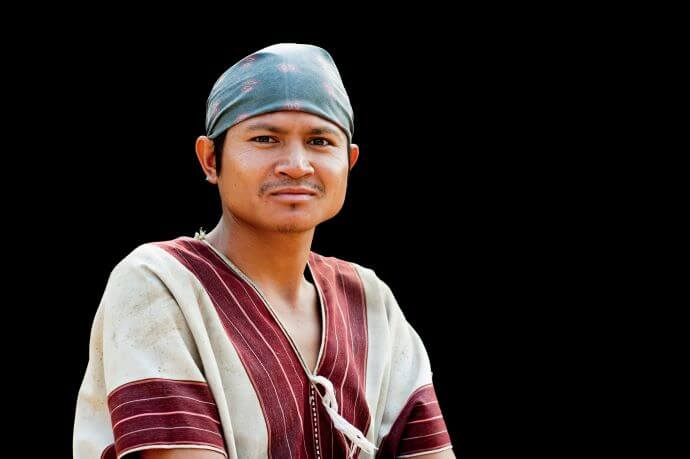
Karen
Another large ethnic group in Myanmar is the Karen, who live mostly in the hilly eastern areas of Myanmar (especially in the Kayin State).
In total, they are believed to make up around 5% of the total population of Myanmar.
More so than most other ethnic groups in Myanmar, the Karen people are a loose grouping of different subgroups, each with its own distinct language, religion, and traditions.
The group is united by the origins of their language, which is Sino-Tibetan. They also hold various cultural festivals, including the Karen New Year and Karen Wrist Tying.
READ MORE: The 20 Best Festivals in the World

Kayah
Located in the eastern part of Myanmar near the border with Thailand, you’ll find the Kayah (a.k.a. Karenni). There are about 200,000 members of this group, who are also Sino-Tibetan in origin.
Religion has long been important to the Kayah, and today they follow various faiths, including Buddhism and Christianity.
Their ancient tribal religions have diminished in importance, but were historically unique. The Kayah traditionally followed an ancient Mongolian religion.
Kayah people of all faiths tend to come together to enjoy the religious Kay Htein Bo Festival, a celebration of thanksgiving for the blessings of that year.
READ MORE: Fascinating Facts About Traditional Mongolian Culture
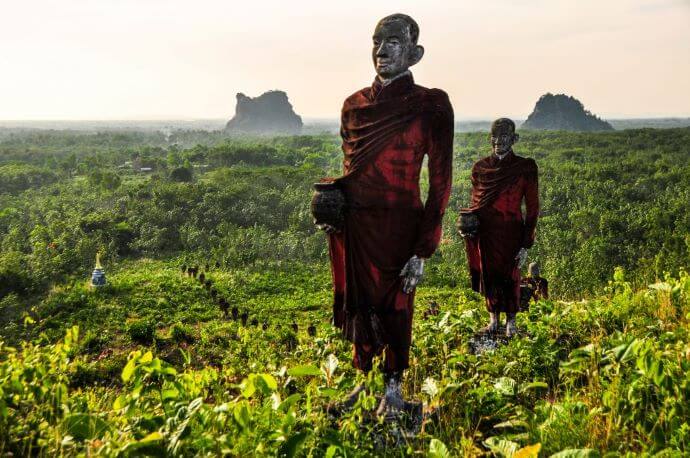
Mon
The Mon people have lived in the country for around 2,000 years, and founded the city-state of Thaton.
So it’s no surprise that Mon culture has strongly shaped Myanmar, most significantly by bringing Theravada Buddhism.
Pagodas and stupas dot the southern Mon State’s craggy limestone mountains, creating sacred Buddhist geography. Mon styles have been assimilated and copied throughout the country.
The Mon people speak Mon, which shares some similarities with Khmer ( language spoken in nearby Cambodia). There’s also a large Mon population in Thailand, and the Thai royal family is descended from the Mon.
This group has many rich cultural traditions, especially in the realm of dance and music. The kyam– an unusual, crocodile-shaped xylophone– is strongly associated with the Mon people.
READ MORE: The Tallest Mountains in the World By Continent
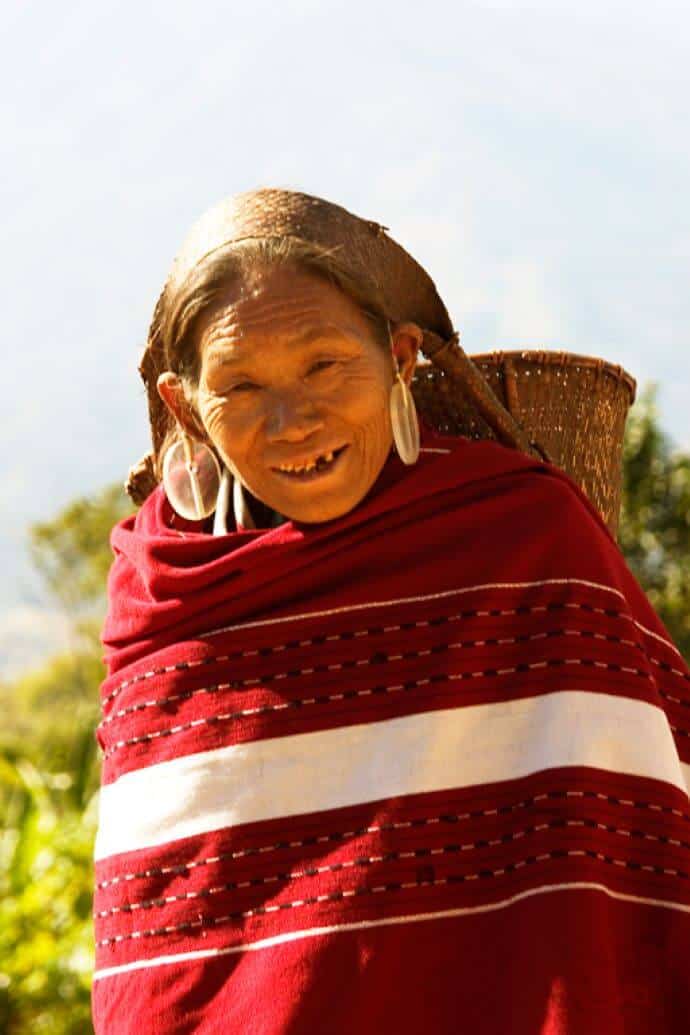
Naga
Myanmar’s Naga people hail mostly from the semi-autonomous northwestern part of the country, which shares a border with Nagaland in India.
Again, Naga refers to various subgroups who share cultural and linguistic similarities. Naka is the Burmese word for “pierced ears,” which is a common characteristic of many members.
The Naga are a tribal society who practice clan intermarriages. They historically protected themselves by building their villages on mountains and hilltops.
Their fierce warrior tradition has long been feared among lowland and central Myanmar peoples. Naga men were known to wear clothing decorated with birds‘ feathers and Tiger’s teeth.
They no longer wear loincloths, and generally speak Burmese within the self-administered zone of Nagaland. This is primarily due to the mixture of ethnicities in this area near Sagaing, and also because the nearly 80 different language variants make speaking Naga incomprehensible, even to other Naga.
The Burmese people have commonly viewed the Naga as headhunters, and they’re correct: Anthropologists have recorded Naga headhunting as recently as 1969!
But the Naga are also known for their beautiful art, folk music, and folkloric dancing. They also hold various cultural festivals throughout the year, including the dazzling Naga New Year.
READ MORE: Jimmy Nelson Photographs Vanishing Tribes
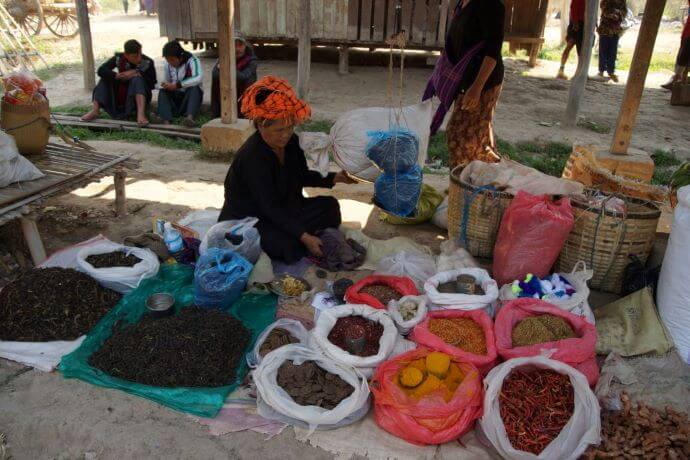
Shan
The Shan people comprise the second-largest ethnic group in Myanmar, with almost 6 million people. Most of them hail from Shan State, although they can be found elsewhere as well. There are significant populations of Shan across the Thai border.
There are bewildering differences between the many subgroups. But they’re united by some similarities, especially language.
Most members of this group can speak both Burmese and Shan. This is known as a Tai language (and called Shan-Tai), with links to Yunnan in China, which is where the Shan people of Myanmar originated.
Traditionally the Shan have been known for their beautiful artistic works, and there are numerous traditional dances and folk tales.
The Shan have distinct kingdoms and princedoms in the Shan Hills, which was a separate set of Shan States within what is now Myanmar until the era of British colonization.
Shan architecture can be seen in the regional capitals of Tachilek, Kengtung, Lashio, and Hsipaw, although these areas are becoming increasingly Chinese.
Most travelers encounter the Shan people and culture when visiting Inle Lake, a popular Myanmar tourist attraction. Make sure you eat lots of Shan noodles while you’re in the country.
READ MORE: The Largest Lakes in the World
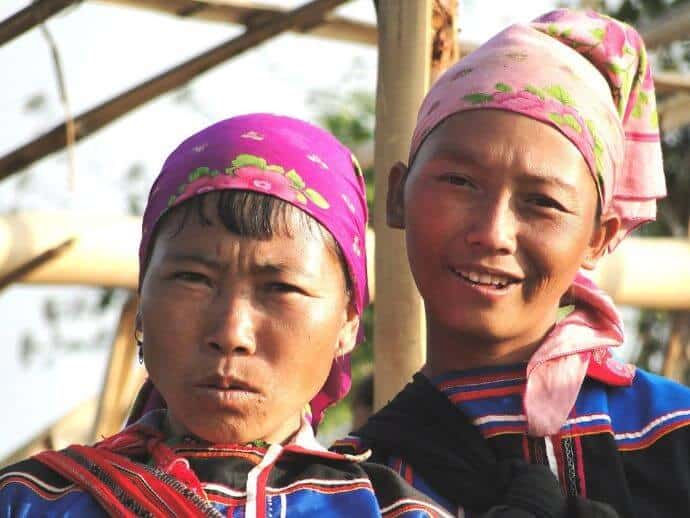
Wa
In northern Myanmar, close to the border with China, you will find the Wa people. Pangkham is their regional center.
The Wa are one of Myanmar’s oldest, yet least known ethnic groups. They have strong traditions and folklore, mostly handed down orally from generation to generation.
It was only in the early 20th century that a script was first formed for the Wa language (from the Austroasiatic language family), and some of these folk tales were written down for the first time.
Although the Wa were traditionally animists, Christian missionaries arrived in the early 20th century and many converted. The Bible was one of the first texts to be written in the newly-formed Wa script.
Though separated into different areas of Shan State, the Wa remain semi-autonomous, speak mainly Chinese now, and their social and political structures are similar to the Chinese.
Few people understand the sheer diversity of Myamar cultures and histories that combine to make the country such a rich travel destination. But Myanmar visitors typically enjoy meeting the diverse peoples of this deeply spiritual, but also deeply divided nation.
I have personally found the courage, resilience, friendship, loyalty, and dark humor of Myanmar’s peoples to be bottomless and unrivaled. -text and photos by Monique Skidmore, unless otherwise noted. Featured image by Qamera from Pixabay.
Traveling to Myanmar?
Check out the following services we use!
G Adventures or Intrepid Travel for a multi day tour of Myanmar
DollarFlightClub or Airfarewatchdog to find a cheap plane tickets.
Booking.com or Agoda to find a hotel deals.
Viator for a stellar day tour.
Lonely Planet for Travel Guides.
World Nomads for Travel Insurance.
TrustedHousesitters, we’ve found great pet sitters to watch our house and love on our two dogs!
Looking for essential Travel Gear? Check out these great options!
The Best Travel Clothes for Women & Men
The Best Vegan Boots for Women & Men
The Best Backpacks for Travelers
Plastic Free Products for Travelers

